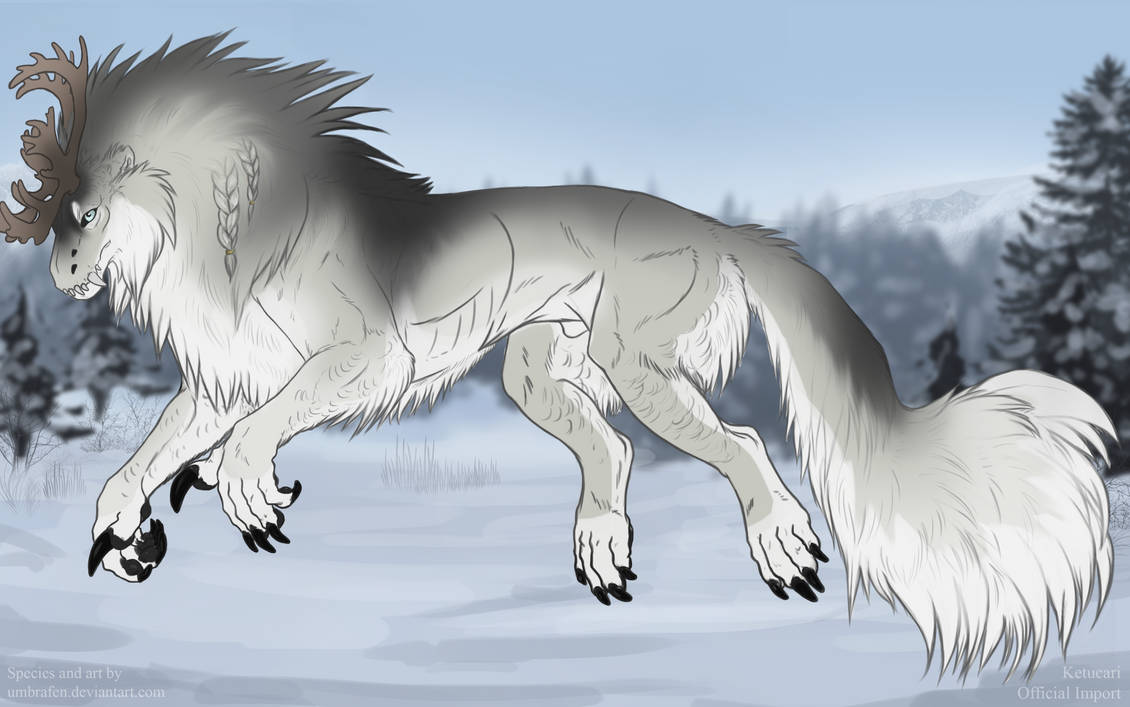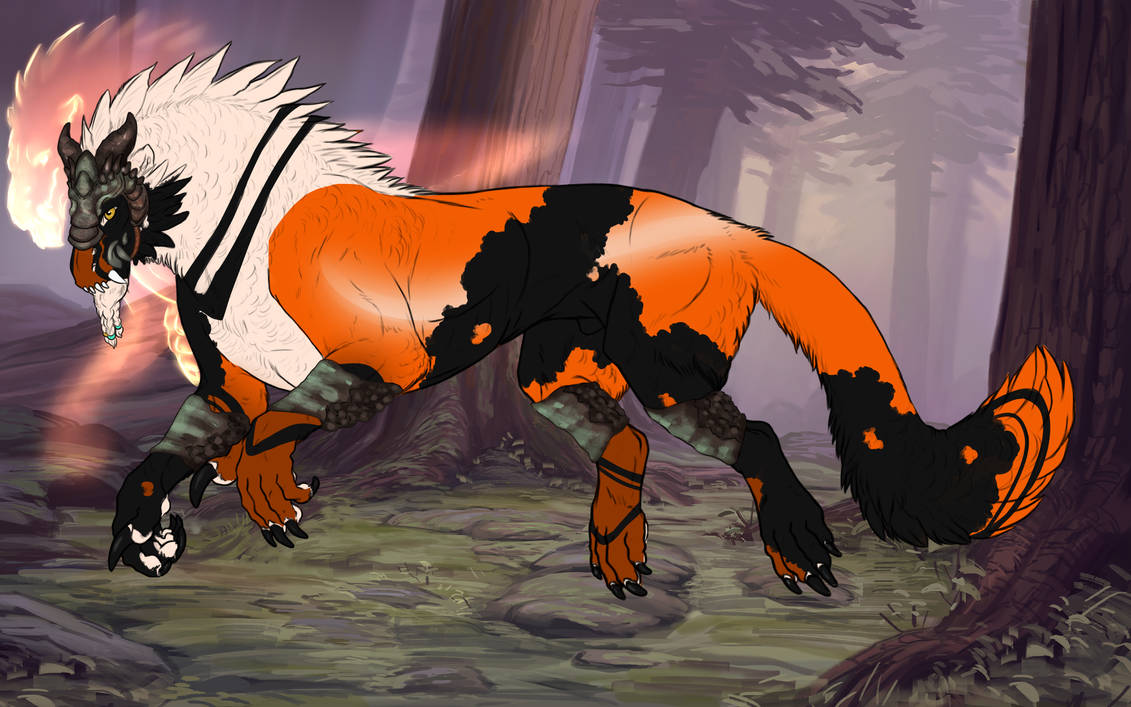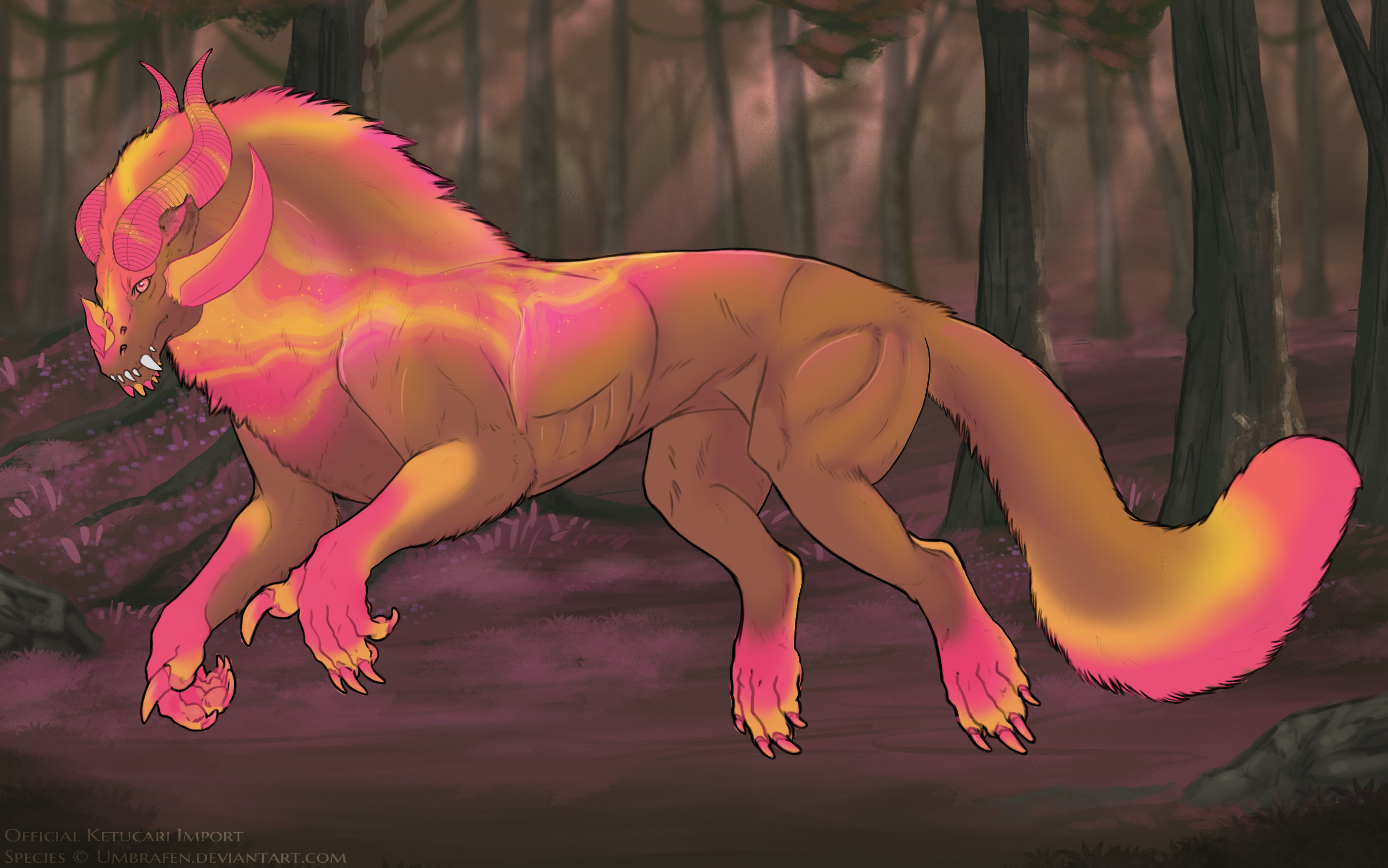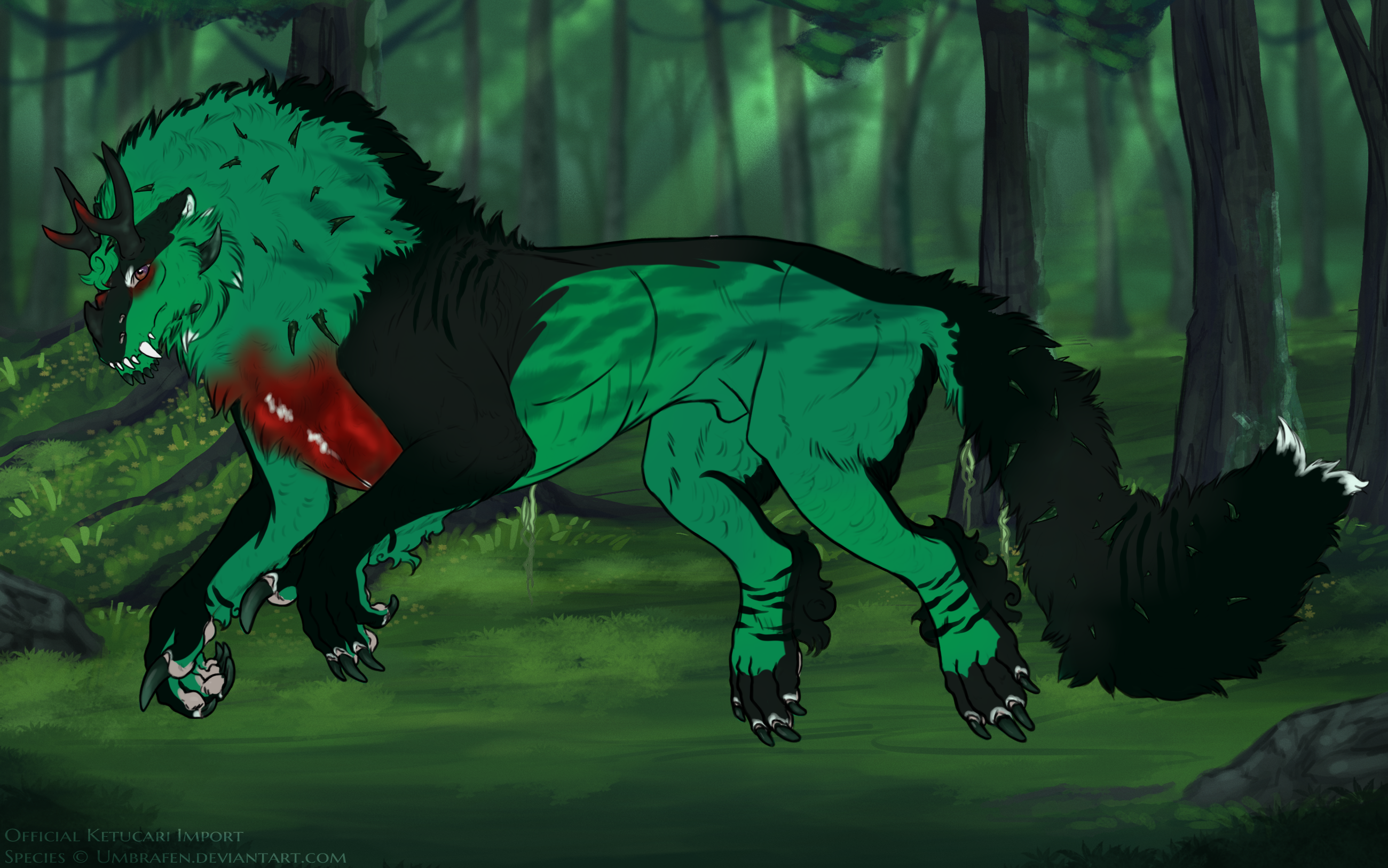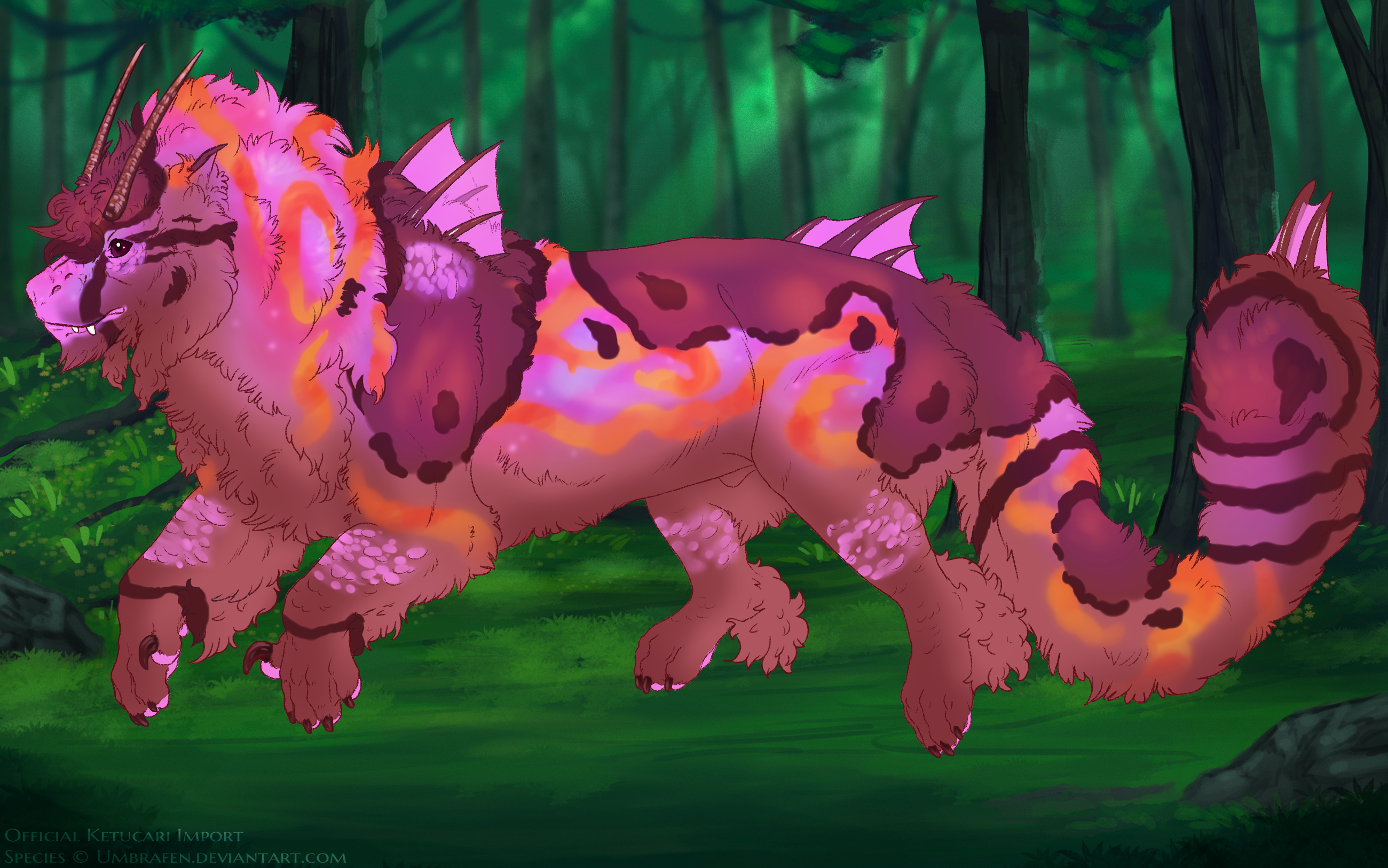Need a change?
Fur And Feather Edits
- The Bronze and Mithril Clippers allow for a degree of editing to a ketucari’s fur and feathers.
- A Bronze Clippers allows for feather edits covering an area of 10% of the ketucari, while a Mithril Clippers allows for feather edits covering an area of 50%. Feather edits should surpass no more than 70% of the ketucari’s area and alter no more than 50% of the original lineart.
- Clippers cannot be used to make one feather type mimic another.
- Clippers may not be applied before the design is uploaded and accepted! Please apply your clippers through the Apply an Item Thread.
Acceptable Edits
As noted above, clippers are measured on two separate measures: how much area does the edit cover, and how much lineart does it modify? Area covered should be considered like a tattoo or scar, while lineart modification is a little different.
(Bronze Clippers)
These mane braids are located in an area where there is very little lineart (only contour lines for the Phoenix base). While they cover some area, a little less than 10%, they affect the lineart to a negligible degree.
(Bronze Clippers)
These beard braids are another example of a feather edit that affects the lineart much less than its area suggests. While they extend out of the original import, they overwrite only the original Bearded chin’s lineart.
(Mithril Clippers)
This whole-frill edit is an example of an edit that affects as much or more lineart than area-- the entire frill has been flopped over, overwriting some of the original lineart on the neck as well as erasing the original frill lineart. This is a legal edit, but would not be able to be paired with extensive edits elsewhere.
(Mithril Clippers)
While this lion-cut style edit looks fairly dramatic, the actual affected lineart area is within allowable limits.
A tail amputation additionally counts towards the lineart modification limit. A ketucari’s tail counts as approximately 25% of the lineart.
Frill and Tail Edits
Due to how important they are in distinguishing a feather type, frill and tail edits have slightly different rules than other parts of a ketucari.
Frills and tails can be clipped or styled into any style that is logically feasible for the feather type’s feathers-- feather texture should not be significantly altered. Feathers should not be significantly lengthened-- some fudging is allowed to make a wider range of styles possible, but not to the point of making (for example) a smooth resemble a fantail. Small items like hair ties or thin ribbons can be added without needing an additional trinket, but a larger item such as an obvious or decorated hair clip may need a trinket applied alongside the Clippers.
The above frill edit is one example of a dramatic styling that is legal-- while the entire frill has been altered, the shape and texture of the feathers are very clearly distinguishable. Another potential example is that the loose, thin, and flowing feathers of a phoenix or nicobar could be braided, but a fantail’s frill is made of large stiffer feathers and would not take that style easily. However, some feathers could be bound together like a small ponytail.
Mane, Cheek, Forelock, and Beard Edits
The area around a ketucari’s head is much more freely editable.
The area concerned by these rules can be seen highlighted in pink on a smooth standard (the affected lineart region has also been colored a darker pink):
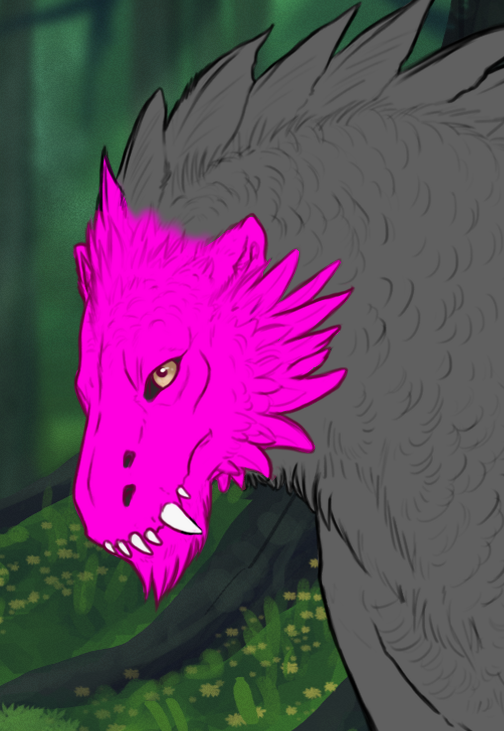
This includes the cheek frills, a Bearded chin, and the first couple feathers of the frill. Feathers in this area can be restyled, cut, or extended roughly freely-- as long as the texture still matches the texture of the base feather type and the total area of all edits does not exceed 70% of the area the ketucari’s import takes up unmodified.
Additionally, edits to a ketucari’s mane outside the frill (the neck and potentially chest area) follow similar rules. This includes things like the braids in a Phoenix’s mane such as the example in the above section or other forms of styling, including shaved areas. Feathers in the mane should not be extended to the same degree and should retain the approximate “shape” and texture of the original feather type.
Fetlocks or Muffs
The feather types that possess muffs or fetlocks (additional feathers around the feet) can have them removed or restyled (at this time, Lucerne, Nicobar, and Jacobin). Other feather types can have muffs added as long as the muffs match the texture of the existing feathers.
(Mithril Clippers)
This example adds fetlocks to a frizzle-- see the additional fluff on both the front and back feet. Additionally, there is a small forelock added.
(Mithril Clippers)
This example on a danuoc frizzle pairs fetlocks with frill and cheek edits. Additionally, some extra fluff has been added to the neck within the area of the original lineart.
Balds
Clippers may be used on a bald, however, as their fur is extremely short and fine, all edits besides shaving are defined as extending feathers and follow the respective rules for that area of the ketucari.
